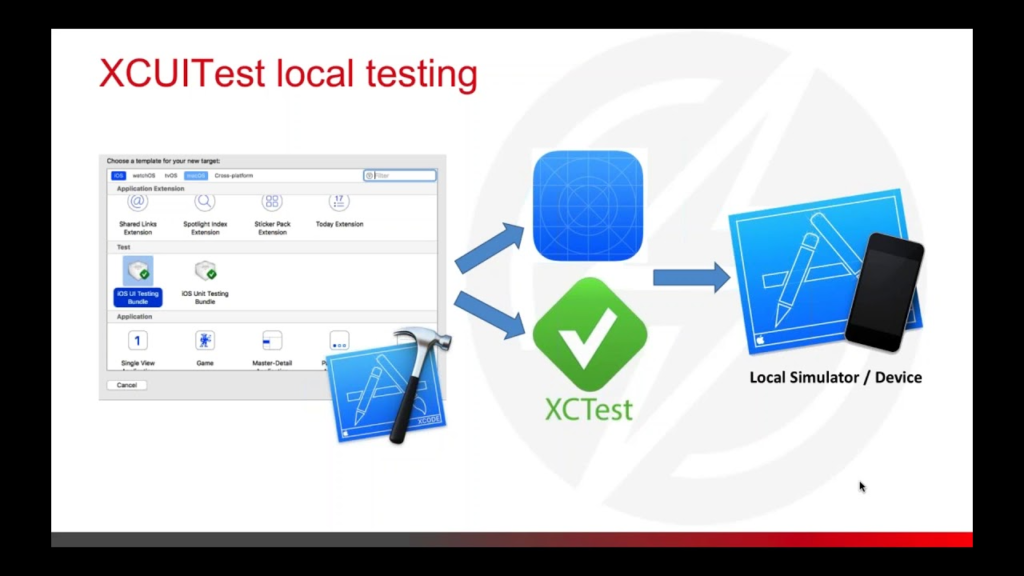
By 2024, mobile apps are expected to bring in $935 billion in revenue. People’s daily lives are mostly dominated by mobile apps. This clarifies the importance of mobile apps. Mobile test automation frameworks are software tools. App testing on automation frameworks refers to the practice of using specialized software frameworks to automate the process of testing mobile applications. In this post, we define test automation for mobile apps and then discuss our top picks for automation frameworks to complete the testing.
What are Mobile app Test Automation Frameworks?
Mobile Test Automation Frameworks are sets of pre-defined guidelines, best practices, and tools that facilitate and streamline the automated testing of mobile applications. These frameworks aim to simplify the process of creating, executing, and maintaining test scripts for mobile apps, ensuring efficient and effective testing. Mobile applications often need to function across various devices, platforms, and screen sizes, making automation crucial to achieve comprehensive test coverage.
Selection Criteria for Frameworks app Test Automation
With so many options on the market, choosing the best mobile app test automation framework can be challenging. When choosing a mobile test automation framework, some important factors to take into account are:
Platform Compatibility
The mobile app’s development platforms, such as iOS and Android, should be supported by the framework. To ensure compatibility, it is also crucial to take into account the platform version for which the app is being developed.
Integration Capabilities
For automated testing to be possible throughout the development cycle, the framework must be able to easily interface with the CI/CD pipeline. Furthermore, by integrating the testing process with other technologies like source control, test management, and bug-tracking software, it may be made even more efficient. Additionally, these tools can help streamline the testing process and improve overall productivity.
Ease of Use
The framework must include features that make it simple to use and an intuitive interface.Or, selecting a low-code or no-code tool would be beneficial if the team lacks coding knowledge.
Device Compatibility
The mobile test automation framework should enable test execution across the spectrum of devices that your application intends to support, taking into account variations in screen sizes, resolutions, and hardware specs. This makes it more likely that the software will function properly on many platforms and devices.
Reporting and Analytics
Robust reporting and analytics features should be included in the framework to enable testers to monitor the status of their automated tests and pinpoint problems that need to be fixed. Testers should be able to swiftly detect and fix problems with the help of clear, concise reports.
Support
There should be active support for the mobile test automation framework. This support could come from a user, developer, or expert community that is active and can offer advice and assistance.
Top best mobile app testing automation frameworks

Numerous frameworks and tools are available for testing mobile applications. Among the most well-liked ones are:
Appium

Using the open-source Appium automation framework, you can automate testing of online, hybrid, and native mobile applications on a variety of platforms. We’ll examine Appium in more detail in this section, covering its features, restrictions, and cost structure.
Features of Appium
Numerous programming languages, such as Java, Python, Ruby, and JavaScript, are supported by Appium. It also lets you test on real devices and emulators for a variety of operating systems, including iOS and Android. To do this, establish a connection with a cloud device lab.
Appium offers support for testing mobile web applications in addition to native and hybrid applications. It also connects with Selenium, so you can test on web and mobile devices using the same codebase.
Limitations of Appium
Appium is a strong automation tool, however it is not without restrictions. One limitation for certain testing circumstances might be that it does not support image recognition. Furthermore, creating and setting up Appium might be a difficult procedure that calls for additional technical know-how.
Pricing model
Use of Appium, an open-source framework, is totally free. However, there are a number of third-party providers who charge for these services if you need further support or advice.
All things considered, Appium is a strong and adaptable automation solution that may assist you in streamlining the testing of mobile apps. It does, however, have certain drawbacks, and configuring it can require greater technical know-how.
XCUITest

You can test iOS applications with XCUITest, an automation framework created by Apple. We’ll examine it in more detail in this part, covering its features, restrictions, and cost structure.
Features
The main feature of XCUITest, which was created especially for testing iOS apps, is its capacity to test both native and hybrid apps. It interfaces with Xcode, Apple’s integrated development environment, and lets you write tests in Swift, the programming language (IDE).
In order to save time and resources, it also offers parallel testing, which enables you to execute several tests concurrently on various devices.
Limitations
It’s vital to take into account the limits of XCUITest. First off, it does not offer testing for Android or other platforms; it is exclusively made for testing iOS apps. Second, it can be difficult to set up and configure, particularly for people who are unfamiliar with Apple’s programming tools. Furthermore, even if it is strong, it could not be appropriate for all kinds of iOS apps because it might not be able to test some of the more intricate aspects.
Pricing model
XCUITest is a framework that is available for free and is open-source. To use it efficiently, though, you’ll need a Mac machine and Apple’s development tools. You won’t have to pay any license fees because the Xcode development environment is also free to use, even though this might be a limitation for some customers.
To sum up, it is an effective tool for testing iOS apps that can help you organize your testing procedure. Despite a few drawbacks, it works well with Apple’s development tools and is a great option for iOS programming. You can check out XCUITest’s official website to find out more information.
Espresso

Espresso is a great option for testing Android applications because of its many features.. Google’s Espresso is a succinct and effective API for automating interactions with UI elements within an Android application. It is an open-source testing framework that is compatible with emulators and real devices. Espresso is a well-liked option for developers and testers due to its reputation for speedy and dependable test execution.
Features of Espresso
Espresso is a great option for testing Android applications because of its many features. Some of these features include:
User-Friendly API: Because of Espresso’s user-friendly API, testers may create clear, understandable test cases. This API makes it simple for testers to move between the UI elements of an Android application.
Fast Execution: Because of its quick execution speed, it is well-suited for testing extensive applications. Tests are run faster since they are run on the same thread as the application.
Advanced synchronization: Espresso has sophisticated synchronization features that enable tests to pause execution until particular user interface events occur.
Automatic synchronization with UI thread: It does this automatically by synchronizing with the application’s UI thread, reducing the need for manual synchronization.
Supports both Android and Kotlin: Espresso enables developers to build tests in their choice language by supporting both the Kotlin and Android programming languages.
Limitations of Espresso
Espresso is a fantastic framework, but it has limits when it comes to testing Android applications. These limitations include:
Limited support for cross-platform testing: Espresso does not support testing on iOS devices; it is made exclusively for Android applications.
Limited support for web testing: Testing web applications on mobile devices is not supported by it.
Requires a deep understanding of Android: Espresso requires its testers to possess a thorough understanding of Android programming, including familiarity with intents, activities, and the Android lifecycle.
Pricing Model
The open-source test automation framework Espresso is offered without charge. On the other hand, access to an Android development environment is necessary for developers and testers.
The following frameworks are noteworthy even if they were excluded from our list:
Calabash

A test automation framework for iOS and Android apps is called Calabash. Calabash uses application behavior to test various scenarios rather than depending on programming to develop scripts.
However, we encourage users to explore alternative options. Additionally, we recommend seeking out newer and more robust solutions. On the other hand, we understand the disappointment this may cause and apologize for any inconvenience.
Selendroid

Selenium’s entry into mobile device automated testing is called Selendroid. A well-known web browser framework built on JavaScript is called Selenium.
Although Selendroid was intended to handle hybrid, web, and native Android applications, it is no longer being maintained.
Xamarin UI.Test

Additionally, Xamarin provides tools for developers to build, test, and monitor their applications. Furthermore, Xamarin allows for the sharing of code across different platforms, which can save time and resources. In conclusion, Xamarin is a versatile and efficient development platform for creating diverse applications.
However, we do believe that Xamarin could be a valuable tool in the future.
When doing automated testing, use Mailosaur to filter out problems with SMS and email.
Mailosaur is useful for automated testing of email or SMS functionality, regardless of whether you use Appium, XCUITest, or Espresso. With Mailosaur, you can test end-to-end features like verification messages and password resets.
Conclusion
In conclusion, there are a variety of mobile test automation frameworks on the market that can assist teams in enhancing the caliber of their mobile applications and expediting the testing process. Every framework has a unique collection of features, restrictions, and cost structures, therefore it’s critical to thoroughly compare and choose the best one depending on the needs and objectives of the project.
While some frameworks, like Appium and XCUITest, are more focused on mobile automation testing, others, like Testsigma and Katalon, offer a full feature set for both online and mobile testing.To guarantee seamless and efficient testing, it is equally crucial to adhere to best practices and integrate the framework with the agile approach. Nevertheless, choosing a framework is just one step in the process.
Register for a free trial of Testsigma if you would like to give it a try for your needs in mobile automated testing. Test Sigma provides a range of options to suit your individual requirements and financial constraints.
Our customer service team is always on hand to help you during the testing process. Try Testsigma now to enjoy the advantages of automated testing and stop letting manual testing impede the development of your mobile apps.
Frequently Asked Questions
Which framework is best for mobile app testing automation?
A number of variables, including the application’s type, budget, team experience, and programming language, determine the optimal architecture for automating mobile apps. Test Sigma, Appium, Espresso, XCUITest, and Selendroid are a few well-known frameworks.
Additionally, it is important to consider the compatibility of each framework with your specific project requirements. Moreover, you may want to compare the performance and community support of each framework. In conclusion, it is essential to thoroughly research and evaluate all available options before making a decision.
What Are The Typical Obstacles in Automating Mobile(app) Testing?
Choosing the appropriate number of test cases, accommodating various screen sizes and resolutions, managing the inventory of devices or emulators, adapting to frequent changes in mobile OS versions, and testing under various network situations are some of the typical issues in mobile test automation. Using the appropriate tools and frameworks, having a solid mobile automation plan in place, and being flexible enough to adjust to evolving mobile testing requirements are all necessary to overcome these obstacles.
